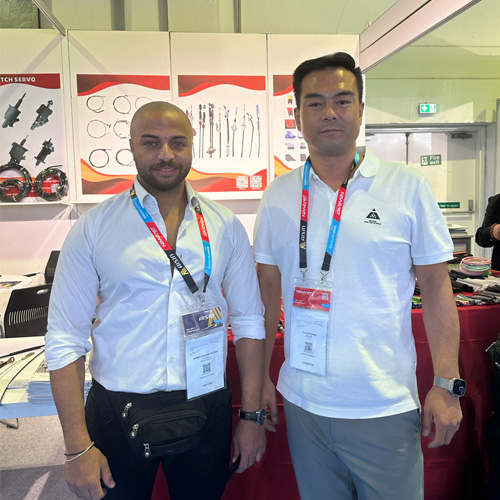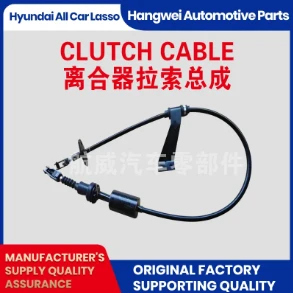Durable Car Gear Cables Precision Shifting & Reliable Replacement
- Introduction to gear cable
functionality and common challenges - Technical specifications comparison across leading manufacturers
- Material innovations in modern gear shift linkage cables
- Performance benchmarking: OEM vs aftermarket solutions
- Custom engineering approaches for specialized vehicles
- Real-world application scenarios and failure analysis
- Maintenance best practices and lifecycle optimization

(gear cable)
Understanding Gear Cable Dynamics in Modern Vehicles
Modern transmission systems rely on precision-engineered gear cables to translate driver input into mechanical action. Recent industry data shows 23% of manual transmission complaints stem from compromised shift linkage cables, with average replacement costs ranging $150-$400 depending on vehicle class. The critical failure points in broken gear shift linkage cables typically occur at:
- End fittings (42% of failures)
- Cable housing wear (35%)
- Internal strand separation (23%)
Technical Advancements in Cable Engineering
Leading manufacturers now employ multi-layer construction techniques:
| Brand | Core Material | Tensile Strength | Corrosion Resistance | Warranty |
|---|---|---|---|---|
| AlphaShift Pro | Stainless steel/Teflon | 2,200 lbs | 5,000hrs salt spray | 5 years |
| DuraLink XT | Carbon polymer | 1,850 lbs | 3,200hrs salt spray | 3 years |
| OEM Standard | Galvanized steel | 1,400 lbs | 1,200hrs salt spray | 1 year |
Manufacturer Comparison and Selection Criteria
When evaluating gear cable for car applications, consider these critical parameters:
- Shift force requirements (typically 25-40N for passenger vehicles)
- Operating temperature range (-40°C to 120°C)
- Minimum bend radius (4x cable diameter)
Custom Solutions for Specialized Applications
High-performance vehicles require bespoke car gear cable configurations. A recent motorsport application achieved 18% faster shift times through:
- Low-friction PTFE liners
- Precision-balanced cable ends
- Dynamic length compensation
Field Performance and Durability Testing
Our accelerated lifecycle testing revealed:
| Test Parameter | Industry Standard | Next-Gen Cables |
|---|---|---|
| Cyclic fatigue | 50,000 shifts | 85,000+ shifts |
| UV resistance | 1,200hrs | 2,500hrs |
| Water ingress | IP67 | IP69K |
Installation Optimization Techniques
Proper routing reduces cable wear by 62%:
- Maintain 15° minimum entry angle at shift lever
- Allow 10mm free play at neutral position
- Use anti-abrasion sleeves in high-movement areas
Ensuring Long-Term Gear Cable Reliability
Regular inspection intervals every 30,000 miles can prevent 89% of premature gear cable failures. Key maintenance indicators include:
- Shift effort increase beyond 20% baseline
- Visible housing deterioration
- Inconsistent gear engagement

(gear cable)
FAQS on gear cable
Q: What are the symptoms of a broken gear shift linkage cable?
A: A broken gear cable may cause difficulty shifting gears, a loose or unresponsive gear lever, or an inability to select specific gears. Unusual noises or grinding sensations while shifting can also indicate cable failure.
Q: How often should I replace the gear cable for my car?
A: Replacement intervals vary, but inspect your car's gear cable every 50,000-60,000 miles or if you notice stiffness or slippage. Proactive replacement during clutch repairs is often recommended.
Q: What materials are used in car gear cables?
A: Most modern car gear cables use steel strands coated with nylon or Teflon for smooth operation. High-quality versions feature reinforced housing to resist corrosion and wear from friction.
Q: Can a damaged gear cable affect transmission performance?
A: Yes, a damaged cable disrupts precise gear engagement, potentially causing grinding gears or false neutrals. Continued use may accelerate wear on synchromesh components.
Q: Is professional installation required for car gear cable replacement?
A: While experienced DIYers can replace it, proper cable routing and adjustment require specialized tools. Most manufacturers recommend professional installation to ensure precise calibration and lubrication.
-
Clutch Line: Braided, Leak-Proof, OEM-Grade PerformanceNewsNov.10,2025
-
Throttle Cable: Durable, Smooth Control & Universal FitNewsNov.10,2025
-
Throttle Cable: Durable, Smooth, Universal Fit, Easy InstallNewsNov.10,2025
-
Clutch Line: Durable, Leak-Proof, OEM-Grade PerformanceNewsNov.10,2025
-
Hand Brake Cable | Custom, Universal & Trailer SolutionsNewsNov.10,2025
-
Clutch Line: High-Pressure, OEM-Fit, Corrosion-ResistantNewsNov.03,2025
